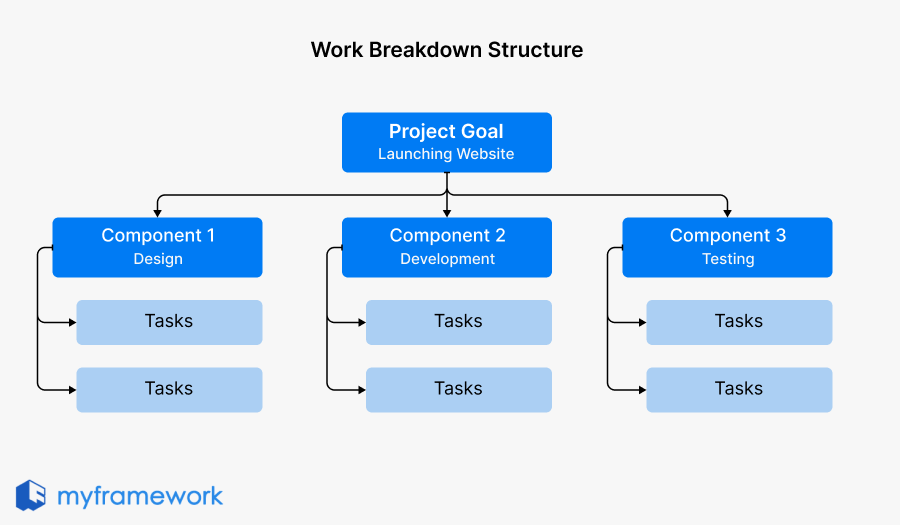Why Do Projects Often Go Off Track?
Many teams start projects with excitement and ambition, and finally end up facing missed deadlines, unclear responsibilities, and budget overruns.
Despite some unexpected factors, in some cases, people realize that the work wasn’t clearly defined from the beginning.
That’s where the Work Breakdown Structure (WBS) comes in. It much like factorization in math, breaking a project into smaller and smaller components — from overall project goals, to tasks, to daily individual actions — until nothing more can be divided.
WBS was developed by Dr. Harold Kerzner in his classic book “Project Management: A Systems Approach to Planning, Scheduling, and Controlling.”

Now WBS has become a key tool in modern project management, helping both individuals and organizations simplify complexity and improve clarity.
Understanding Core Concept
WBS stands for Work Breakdown Structure. It is a visual, hierarchical way of organizing all the work needed to complete a project.
Let’s break it down layer by layer:
Top Level – The Final Deliverable
This is your main goal — for example, launching a new website or building a product.
Mid Levels – Major Components
Break the project into key phases or outputs. For a website, that might be: design, development, content, and testing.
Lowest Level – Work Packages (Tasks)
These are the smallest units of work — things that one person or a small team can handle, like “design homepage wireframe” or “write product descriptions”.
The rule: if a task is too large to estimate time or assign responsibility clearly, break it down further.
The goal: Make sure nothing is missed and everyone knows what to do.

Here is a visual breakdown of the Work Breakdown Structure (WBS).
It starts from the main project goal and divides the work into phases, then into specific tasks.
Unlock all frameworks and templates
Unlock exclusive thinking frameworks and practice templates.
Become a member to access all premium content to elevate your thinking!
Tips for Building an Effective WBS
- Use the 100% Rule: Make sure the WBS covers 100% of the project scope — nothing more, nothing less.
- Keep levels consistent: Each level should represent the same type of breakdown (e.g., phases → deliverables → tasks).
- Don’t skip the details: Avoid vague tasks like “do design.” Be specific enough to take action.
- Collaborate early: Build the WBS with input from your team to avoid blind spots.
- Visualize it: Use charts, trees, or indented lists to show the structure clearly.
Final Thought
A well-built WBS doesn’t just organize tasks — it helps organize thinking. It brings structure to complexity, clarity to confusion, and confidence to execution.
Whether you’re managing a big business project or planning a school event, Work Breakdown Structure turns big goals into doable steps — and that’s where success begins.



